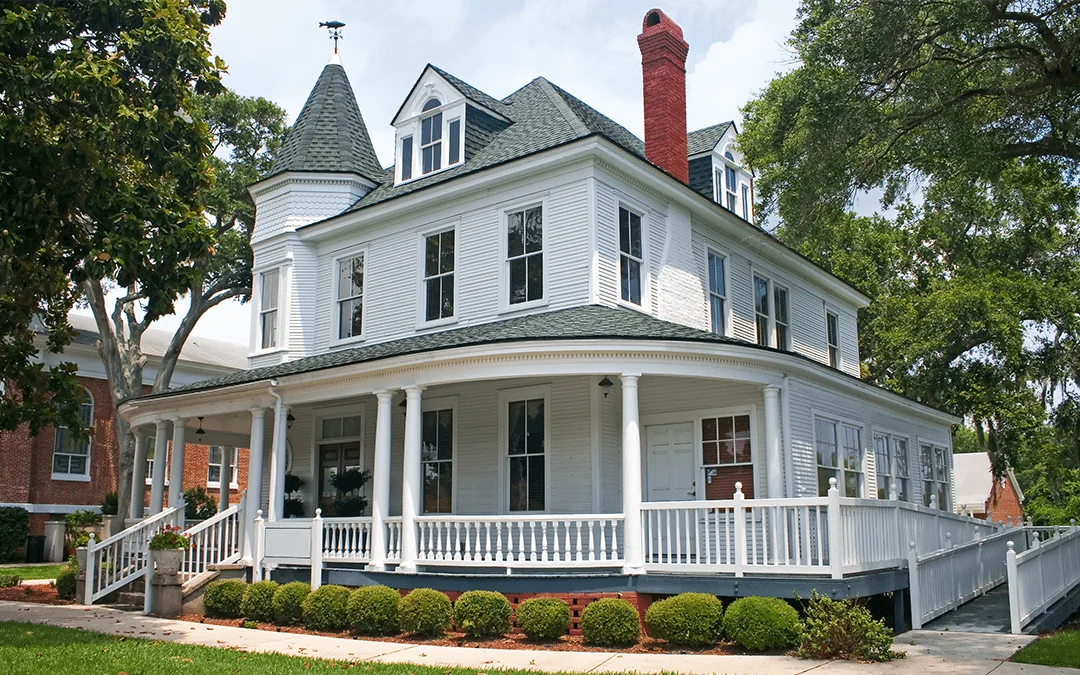9 Steps to Heat Your Older Home
For many people, older homes are quaint and charming. What’s not charming is higher energy bills from heating an older home. It’s true, there are unique challenges to keeping an older home heated, and here are nine steps to take with your older home in order to keep it warm inside.
- Use a programmable thermostat
Save money on your energy bill by using a programmable thermostat. You can conveniently schedule temperature adjustments while you are out of the house during the day and when you return home as well as when you sleep at night and wake up in the morning. Your HVAC system will run as efficiently as possible, and your overall energy use in your older home will be lower. Read more about the benefits of using a programmable thermostat and what models are available here.
- Seal off air leaks
Walk around your house and see if you notice a draft coming from any windows or doors. If so, seal those off to avoid cold air from coming into your house and warm air from going out. Your furnace will run better, and the heating bill for your older home will be lower. You can seal off air leaks yourself pretty easily using caulk and weatherstripping. Or for doors, you can install a door sweep or door snake to block drafts. Check out more tips for sealing air leaks.
- Close your fireplace flue
Just like air leaks from your windows or doors, an open fireplace flue can bring in cold air and let warm air escape your older home. If you’re not using the fireplace, make sure to close the flue. And if your fireplace doesn’t have glass doors, consider adding those as well.
- Rotate ceiling fans properly
In the winter, check your ceiling fans to be sure they are running in the right direction. Heat rises, so ceiling fans should run clockwise to bring down the warm air that has risen. It also keeps air circulating in your older home, helping your HVAC system to not work as hard.
- Check your air vents and doors
Make sure furniture isn’t blocking any vents, preventing rooms from being heated properly. Also, it is a myth to close air vents and doors in your house in order to lower your energy bill. In actuality, it causes your HVAC system to work harder when trying to circulate air throughout your house, which means a higher energy bill and strained equipment.
- Inspect your windows
Your older home may have older windows. Maybe they’re drafty or not energy-efficient. Perhaps they’re leaky or you’d like to update their look aesthetically. Or maybe you’re concerned about lead paint. Whatever the reason, consider having your windows inspected to see if they need to be repaired or replaced. Also, on sunny days, take advantage of opening your blinds and curtains to let the sun warm up your rooms naturally. Then, when the sun goes down, close your blinds and curtains to help prevent the outdoor cold temperatures from cooling down your rooms.
- Lower the temperature two places
By lowering the temperature on your thermostat, even one or two degrees, you will save money. Plus, you can always use blankets or an extra layer of clothing if needed. You can also reduce your energy bill by lowering your water heater’s temperature to 120 degrees Fahrenheit.
- Clean or replace your air filter
Our recommendation is to replace your air filter at least once a month, although some filters can last two to three months. What’s important is to remember to check it regularly and replace it when needed. For washable air filters, we recommend cleaning them once a month, especially during periods of heavy use. This simple step helps your furnace function properly and improves the indoor air quality in your older home.
- Inspect your insulation
To save money and energy, make sure your older home’s walls, attic and basement are well-insulated and consider adding more if needed.
An older home doesn’t have to mean a higher heating bill. These nine steps will go a long way to keeping your home warmer in the wintertime. Contact Keith Air Conditioning at 251-517-4437 for more HVAC tips for older homes or to schedule an HVAC maintenance appointment.

